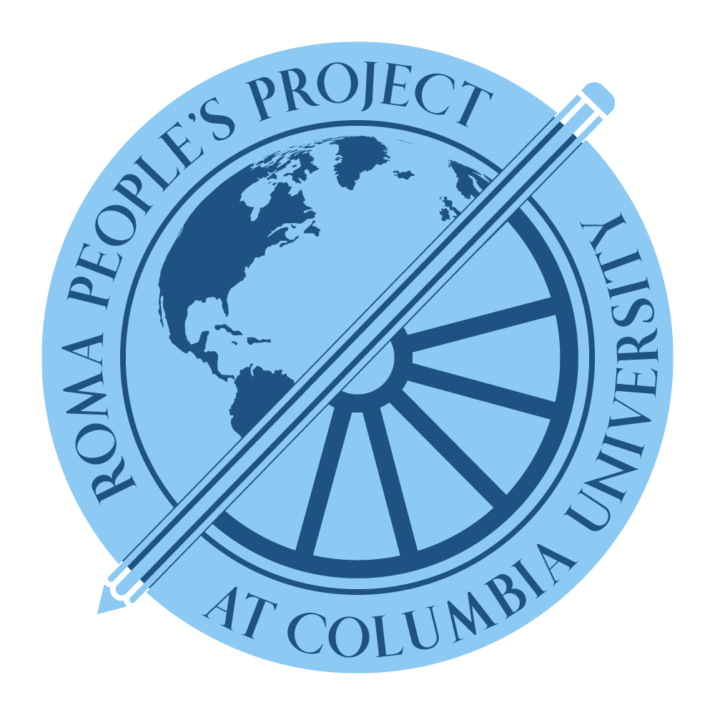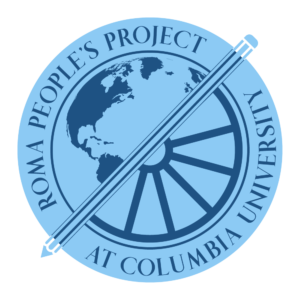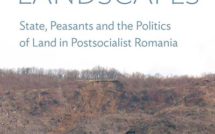

This is part of our special feature, Diversity, Security, Mobility: Challenges for Eastern Europe.
I. Launching the Roma Peoples Project at Columbia University
About twenty-five years ago, I vowed that no one would ever find out that I was a Gypsy from Romania, and I remember clearly the day when, as a little girl, I fiercely decided to keep my embarrassing origins a secret. I would have never guessed that after years of denial and secrecy there would be a time when I would not only speak openly and proudly about my Roma identity, but also create a project for Roma People.
The Project focuses on initiating a dialogue about the Roma in the academic context and beyond. There are more than 15 million Roma worldwide. Commonly known as Gypsies, they are a people who have been without a country and minimal representation within mainstream society for the past 1,000 years—Roma who have been disconnected because of their denied ethnicity, but in search of their heritage. Unfortunately, many Roma experience their identities in disguise—the result of internalized stigma and external discrimination.
In January 2015, I joined Columbia University as a research scholar at the Institute for the Study of Human Rights (ISHR) provided with the opportunity to analyze and write about the Roma identity in a globalizing world. This spring, the project that developed as a result of the initial explorations of a Roma Digital Archive was approved by Columbia University. Hosted within The Center for Justice at Columbia University, the Roma Peoples Project (RPP) spotlights the Roma people and expands Roma studies by examining topics such as identity and stigma, mobility and displacement, archival research, and digital scholarship.
The RPP is building a digital platform that identifies, examines, and curates material about how Roma define themselves, and how others have represented them. It also seeks to create a space for Roma and other marginalized groups —ethnic or otherwise— to discuss their shared challenges and explore how their identities enrich themselves and society at large.
This initiative’s aim is to identify the universal threads on Roma experiences and stories, but also to acknowledge the various ways in which different groups experience their Roma identity. The project hopes to bring a valuable and diverse perspective with an academic focus at the center; but inclusive of diverse communities, Roma and non-Roma, and their experiences. It also aims to examine Roma history, current realities and aspirations.
II. The Roma People – A Brief History
The Roma are commonly known as “Gypsies.” However, “Gypsy” is a misnomer rooted in the belief that they originated from Egypt. In reality, conclusive evidence points to an origin in North India. At different times, various Roma subgroups went through periods of commercial nomadism in Western Europe, adding to the enduring public perception of Gypsies as wanderers. Today, most of the Roma are settled in many different communities around the world. In time, Gypsy has developed connotations such as savagery, criminality, the dangerous other, and the eternal outsider, but also with romantic fantasies about a bohemian, carefree exploration of the world, with fiery passion, and a visceral and masterful approach to art.
Even though the Roma are citizens of many different countries across continents, they lack their own state, and are dispersed over many regions. They have lived on the fringes of societies and have faced isolation, rejection, genocide, and discrimination for centuries. Additionally, although certain spiritual practices are shared among different Roma subgroups, they do not have a common religion.
The estimated 12 million of Roma in Europe makes them the largest European minority.
III. The Possibilities for New Ways to Define Roma
In Europe the Roma are still stigmatized as the beggars on the streets of Paris, London and other cities, “the internal other” who does not belong on the European land. By comparison, in the United States, there are not that many associations except perhaps Gypsy as a romantic, fictional character. As a result of less awareness and prejudices, there is more room to create new, positive associations with the Roma and new empowering ways to define and portray what this identity means.
Hopefully, this process will progressively replace the internalized stigma and stereotypes, the inferiority feelings and the wounds left by discrimination and exclusion, and the struggle to prove oneself as a worthy person, with an image that is characterized by dignity, confidence, talents and skills, self-expression, and actualization of one’s inherent value and potential as a human being.
The initiative aims to contribute by informing and educating Roma and non-Roma, and counter the lack of role-models. There are many diverse and meaningful Roma and friends of Roma stories to be told, shared, and heard. The Roma Peoples Project will be a forum and a repository for these voices, images, narratives, and legends, both about the Roma and by the Roma and for the larger public.
IV. Key Moments and People in the Development of the Roma Peoples Project
In many ways, since its inception, the project has functioned as a start-up initiative with a small team and initial resources and has gradually expanded to engage more people and attract new resources.
The website was built earlier this fall with the support of Alex Gil, Digital Scholarship Coordinator at Columbia University and in collaboration with Columbia’s Group for Experimental Methods at Butler Library, which aims to ideate digital strategies for projects focused on justice and human rights and providing an intellectual home for them. The RPP has found a supportive community in the Group for Experimental Methods and colleagues, such as Professor Dennis Tenen from Department of History and Comparative English, have offered guidance in developing the necessary skills to coordinate a digital platform and how issues of social justice could intersect and be enhanced by digital scholarship.
In this initial phase of development, The Roma Peoples Project has been like a book manuscript that we are still editing, updating and improving. The most significant change since its approval has been renaming the project from “The Roma Digital Archive” to “Roma Peoples Project at Columbia University.”
V. The Roma Launch Event at The Heyman Center for Humanities
On November 14, 2017, The Roma Peoples Project at Columbia University was officially launched. The project spotlights the Roma people and expands Roma studies by examining topics such as identity and stigma, as well as mobility and displacement, while engaging archival research and digital scholarship. The Heyman Center for Humanities co-organized a launch celebration with the Center for Justice, aiming to introduce the new project to the Columbia community, and hoping to inform professors and scholars from various departments about the project’s existence and engage them in a discussion on the Roma, often a marginalized topic in academia. The celebration was honored by the presence of Dr. Ronald Lee, a well-known author and Roma activist, and included welcoming remarks from another prominent Roma author and activist, Dr. Ian Hancock, who created The Romani Archives and Documentation Center at the University of Texas at Austin. Visit the Heyman Center’s website to learn more.
Cristiana Grigore is a research scholar and the founder of the Roma People’s Project at Columbia University, an initiative that spotlights Roma peoples and expands Roma studies. Upon arriving in the United States in 2006, Cristiana found a more conducive environment in which to express her previously concealed Roma identity. She is currently writing a book that explores how her immersion in American culture enabled her to grapple more fully with her Roma/Gypsy ethnicity. Her experiences have been featured by The New York Times, CNN, Al Jazeera America, PRI, and Voice of America, among other outlets. A Fulbright Scholar from Romania, Cristiana graduated from Vanderbilt University with an MA in International Education Policy and Management in December 2012. She earned her BA in Psychology from the University of Bucharest in 2007.
This part of our Campus Spotlight on Columbia University.
Published on December 6, 2017.




